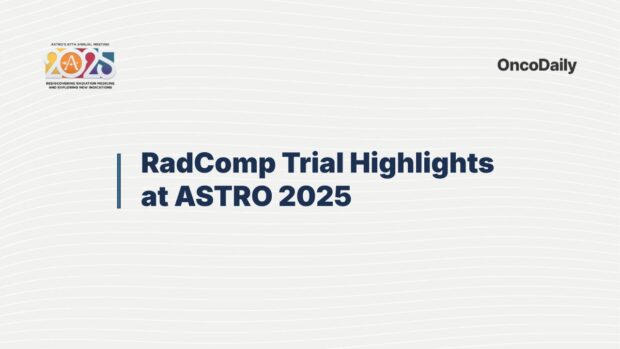Authors: S.M. MacDonald, S. Pugh, R. Paulus, C. Chauhan, L.Z. Braunstein, G.M. Freedman, R.B. Jimenez, J.N. Kim, A.D. Thukral Jr, M.V. Mishra, R.W. Mutter, J.L. Wright, J.J. Urbanic, N. Ohri, H. Boggs, A.K. Chawla, S. Ellenberg, A. Lin, B. Ky, J.E. Bekelman
The RadComp Consortium has released first results from the landmark phase III randomized trial comparing proton and photon therapy for women with non-metastatic breast cancer requiring comprehensive nodal irradiation. The findings were presented as a Late-Breaking Abstract at ASTRO 2025.
Study design
The trial enrolled 1,239 patients randomized to receive either proton radiotherapy (PrRT, n=624) or photon radiotherapy (PhRT, n=615). Median age was 50 years, and nearly 70% had undergone mastectomy. Left- or bilateral-sided cancers accounted for about 62% of cases.
Patients completed HRQOL questionnaires (PROMIS Fatigue, BREAST-Q, Satisfaction with Breast Cosmetic Outcomes, FACT-B) at baseline, post-treatment, and at 1- and 6-month follow-ups. Secondary endpoints included FACIT items and PRO-CTCAE assessments (chest pain, shortness of breath).
Findings
- No meaningful differences were observed between arms in fatigue, cosmetic outcomes, or breast-specific HRQOL scores.
- Shortness of breath: when analyzed as present vs. absent, outcomes favored protons (OR 0.74, 95% CI 0.59–0.93, p<0.01).
- Patient-reported satisfaction: patients treated with protons were more likely to say they would recommend (OR 0.13, p<0.001) or choose the treatment again (OR 0.11, p<0.001).
- Other assessed symptoms and domains showed no significant differences.
Takeaway
In this first randomized comparison of proton versus photon therapy for breast cancer, quality of life through six months remained excellent and largely similar across arms. Differences in shortness of breath and patient preference lean toward protons, though investigators caution these should be interpreted carefully in an unblinded setting.
The primary outcomes of the RadComp trial—loco-regional control and major cardiac events—are still pending and will be reported per protocol.
